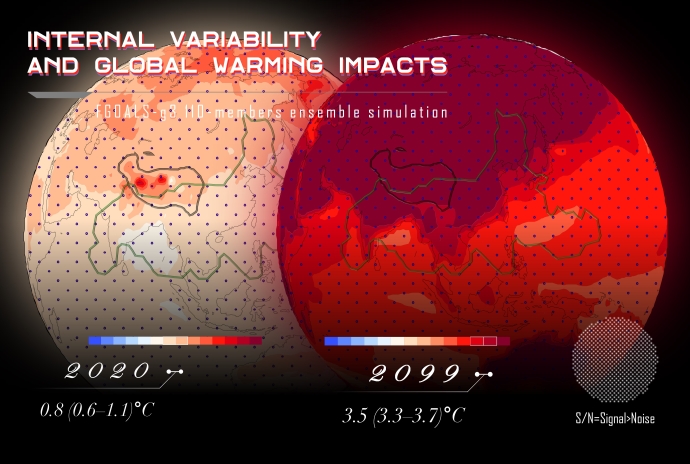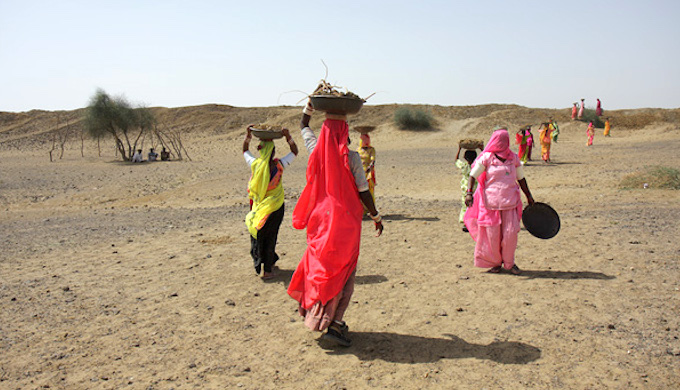Researchers from the Institute of Atmospheric Physics (IAP) of the Chinese Academy of Sciences (CAS) produced a very large ensemble simulation with 110 members from their climate system model FGOALS-g3. This first set of large ensemble simulations may reveal the role of internal climate variability in future global monsoon projections.
The full extent of their research is available in a data description document titled “The Super-large Ensemble experiences of CAS FGOALS-g3” published in Advances in Atmospheric Sciences.
Since the start of the Industrial Revolution era, global warming, melting Arctic sea ice and increasing sea level rise are likely attributed to human activity, according to the IPCC’s AR6 report. The response of climate change to external forcings (including human activity) is non-linear and is affected by internal variabilities (IV) generated primarily by processes internal to the climate or the Earth system.
Recently, scientists have discovered that internal variabilities, such as the Pacific Decadal Oscillation or the Pacific Interdecadal Oscillation, and the Atlantic Multidecadal Oscillation, will greatly impact the Walker Circulation and the global monsoon at over the next three decades. Internal variabilities are also important sources of uncertainty in understanding historical climate change, particularly at the regional scale.
Climate system models facilitate studies of internal variability by providing simulations, especially when using single model large set of initial condition simulations, which are a set of simulations tied to a single climate model in a scenario particular radiative forcing. Large ensemble simulations apply perturbations, or deviations from the normal input, to the initial conditions of each member to create divergent weather and climate trajectories. The ensemble sizes of large ensemble simulations are subject to computational and resource limits similar to those used in previous studies.
Recently, several research groups at the Modeling Center have conducted simulations of large sets of single-model initial conditions that are now possible with rapidly increasing computational capabilities.
The use of large ensemble simulations to study climate change has been a hot spot in climate research. For example, the National Center for Atmospheric Research (NCAR) published a large ensemble simulation in 2015 that has been cited over a thousand times. Until then, ensemble sizes had no more than 100 members, and even today few ensemble simulations have 100 ensemble sizes.
“The CAS FGOALS-g3 Super-Large Ensemble Experiments are the first set of large ensemble simulations from a global climate system model named FGOALS-g3 developed by IAP, CAS,” said lead author ZHAO Bowen. . “Large ensemble simulation has the largest number of samples in the world.”
Each member contains a simulation for the climate system model, including ocean, atmosphere, sea ice, and land components. The researchers fully sampled the different phases of the ocean’s decadal variability as indicated by the initial model under standard historical CMIP6 forcing conditions. They also included the Shared Socioeconomic Pathway scenario (SSP5-8.5), which suggests very high greenhouse gas emissions. These simulations cover a period from 1850 to 2099.

“Our evaluation also shows that these ensembles are able to accurately capture surface air temperature response and terrestrial precipitation, including extreme climate events as well as external forcings, and we can quantify internal variabilities.” , ZHAO said. “More than 100 simulations and their realizations help us study rare events and improve our understanding of the impact of internal variability on forced climate change.”
This study is supported by the National Key Program for the Development of Basic Sciences and the National Natural Science Foundation of China.




